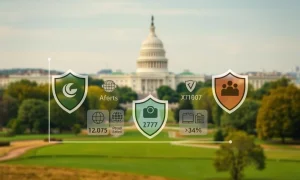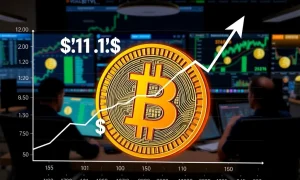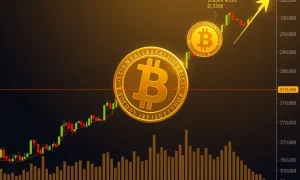In an unprecedented environmental breakthrough, blockchain tokenization is revolutionizing how corporations approach sustainability. Arx Veritas and Blubird have achieved a monumental milestone by preventing 394 million tons of CO₂ emissions through innovative digital asset transformation. This $32 billion initiative represents the largest ESG-aligned tokenization effort in history, demonstrating blockchain’s powerful potential for environmental impact.
How Blockchain Tokenization Transforms Environmental Sustainability
The groundbreaking project utilizes blockchain tokenization to digitize Emission Reduction Assets (ERAs). Consequently, this technology enables precise tracking and verification of sustainability efforts. The tokenized assets include:
- Capped oil wells preventing methane leakage
- Decommissioned coal mines stopping future emissions
- Verified carbon reduction projects with immutable records
Massive Environmental Impact Through Digital Innovation
Furthermore, the 394 million tons of prevented CO₂ emissions equate to extraordinary environmental benefits. Specifically, this achievement matches:
- 395 million round-trip flights from New York to London
- 986 billion miles driven by average passenger cars
- 105 times Iceland’s yearly CO₂ emissions
Institutional Demand Drives Blockchain Tokenization Growth
Moreover, institutional investors are increasingly embracing blockchain tokenization for ESG assets. Blubird reports over $500 million in ongoing negotiations. Additionally, the company has $18 billion in active deals lined up. This growing demand signals a major shift toward sustainable digital investing.
Future Expansion of Tokenized Environmental Assets
Looking ahead, Blubird plans to tokenize an additional $18 billion worth of assets by 2026. This expansion will prevent approximately 230 million tons of CO₂ emissions. The combined total will reach 600 million tons of prevented emissions. Ultimately, this demonstrates blockchain tokenization’s scalability for environmental projects.
Real-World Asset Tokenization Revolution
Real-world asset (RWA) tokenization represents a transformative financial innovation. This process involves minting tangible assets on blockchain ledgers. Key benefits include:
- Shared ownership opportunities for investors
- 24/7 liquidity for previously illiquid assets
- Global accessibility to sustainability investments
Frequently Asked Questions
What is blockchain tokenization in ESG context?
Blockchain tokenization converts physical environmental assets into digital tokens. This enables better tracking, trading, and verification of sustainability efforts.
How does tokenization prevent CO₂ emissions?
Tokenization funds projects like capping oil wells and closing coal mines. These actions physically prevent emissions while creating tradable digital assets.
What makes this tokenization effort significant?
This represents the largest ESG-aligned tokenization project ever recorded. It demonstrates blockchain’s practical application for environmental sustainability.
Are institutions adopting blockchain tokenization?
Yes, institutional demand is growing rapidly. Blubird reports over $500 million in negotiations and $18 billion in pipeline deals.
What types of assets are being tokenized?
The program includes Emission Reduction Assets like capped wells, closed mines, and verified carbon reduction projects.
What is the future outlook for RWA tokenization?
Industry experts predict trillions of dollars will move on-chain. Tokenization offers new liquidity and global access opportunities.








